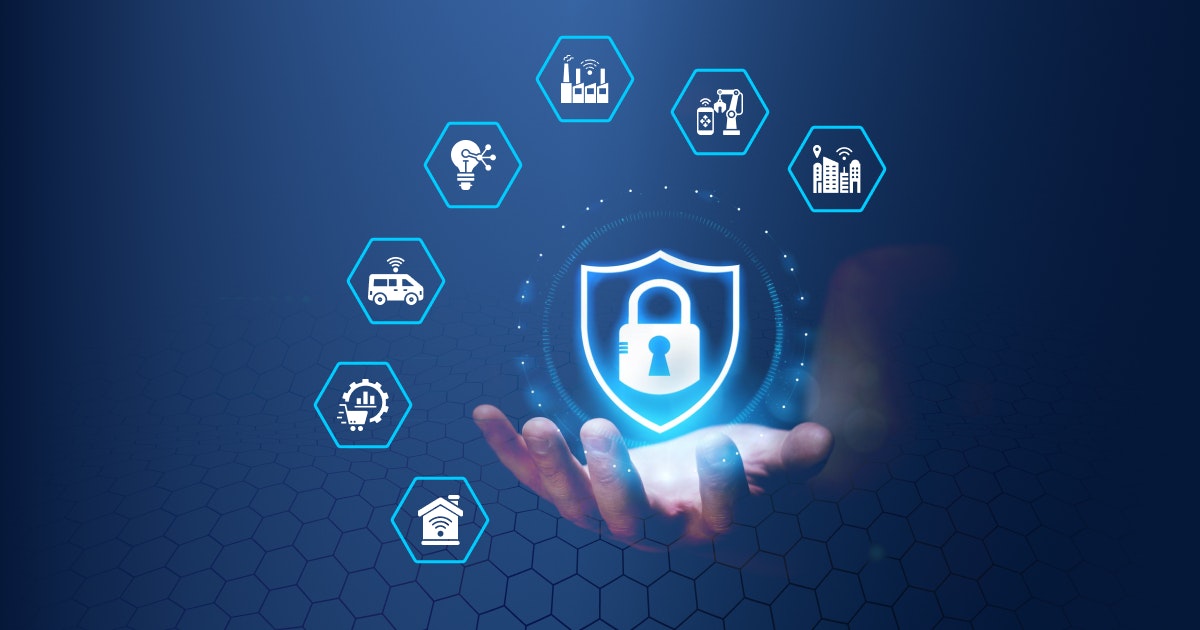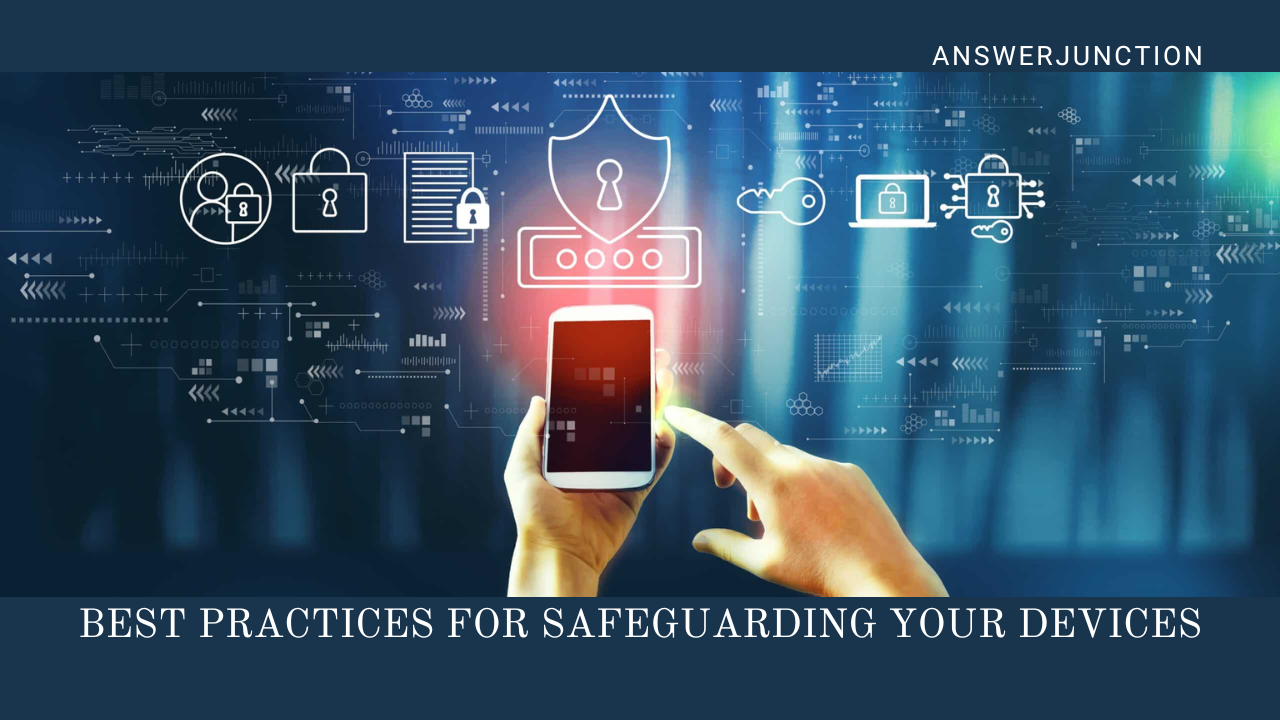In a world where technology integrates into nearly every part of our lives, device security is a priority we cannot overlook. Our smartphones, laptops, and tablets are more than mere gadgets; they house a treasure trove of personal information, from banking details to sensitive communications. Failing to protect these devices can lead to significant consequences, such as identity theft, data breaches, and unauthorized access. Fortunately, there are essential practices that can help safeguard your devices, fortifying them against ever-evolving digital threats.
Understanding the Importance of Device Security

Securing your devices involves much more than a password or an antivirus program. With the rise of sophisticated cyberattacks, it’s essential to understand the importance of comprehensive device security. Today’s cybercriminals use advanced tactics like phishing schemes, ransomware, and malware to exploit vulnerabilities in personal devices. By adopting a multi-layered security approach, you can effectively minimize the risks and make it considerably harder for intruders to infiltrate your devices. This guide will explore the best practices to help protect your devices and data, keeping you one step ahead of potential threats.
1. Using Strong and Unique Passwords
One of the foundational steps in device security is setting strong, unique passwords for each device and online account. Avoid simple, easily guessable passwords like “123456” or “password.” Instead, use complex combinations of letters, numbers, and symbols to increase your password’s security level. Password length also plays a crucial role—aim for a minimum of 12 characters.
To make it easier, consider using a reputable password manager, which can generate and store complex passwords for each account. This way, you only need to remember one master password, and you can enjoy peace of mind knowing that each account has a unique and strong password.
2. Enabling Two-Factor Authentication (2FA)
Two-factor authentication adds an extra layer of security to your devices and accounts. 2FA requires you to verify your identity through a second method, such as a text message code, email verification, or a biometric scan, in addition to entering your password. This second factor makes it significantly harder for unauthorized users to access your devices, even if they manage to crack your password.
Many popular services, including social media platforms, email providers, and online banking services, offer two-factor authentication options. Make it a priority to enable 2FA on all platforms and devices that support it. This additional verification step goes a long way toward protecting your data.
3. Keeping Software and Operating Systems Updated
Outdated software and operating systems are among the most common vulnerabilities that cybercriminals exploit. Developers regularly release updates to fix bugs, enhance features, and, most importantly, patch security vulnerabilities. By postponing these updates, you are potentially leaving your devices exposed to threats.
Enable automatic updates whenever possible, so you don’t have to remember to check for them manually. For devices and applications that don’t offer automatic updates, set a reminder to periodically check for new versions. Ensuring that all software, apps, and operating systems are up-to-date helps fortify your device against the latest security risks.
4. Using Antivirus and Anti-Malware Software
Installing reputable antivirus and anti-malware software is a crucial step in protecting your devices from harmful threats. These programs scan for viruses, spyware, adware, and other malicious software that can compromise your data and privacy. Some premium antivirus software also includes features such as real-time protection, phishing protection, and ransomware shields.
While free antivirus programs can provide basic protection, investing in a comprehensive paid solution offers a higher level of security. Be sure to update your antivirus software regularly, as updates often contain definitions for newly discovered threats.

5. Regularly Backing Up Your Data
Even with all precautions, no system is entirely foolproof. In the unfortunate event that your device is compromised, having a recent backup ensures that you don’t lose your valuable data. Regular backups also offer protection against ransomware attacks, where hackers may encrypt your data and demand payment for its release.
There are multiple ways to back up data: you can use cloud services, external hard drives, or network-attached storage (NAS) systems. Ideally, adopt a hybrid approach, combining local and cloud-based storage to guarantee access to your data regardless of the situation. Schedule automatic backups to ensure your files are always up-to-date.
6. Avoiding Public Wi-Fi for Sensitive Activities
Public Wi-Fi networks, such as those in coffee shops, airports, and hotels, are convenient but pose significant security risks. Cybercriminals can intercept data transmitted over unsecured networks, gaining access to sensitive information like login credentials and payment details. When using public Wi-Fi, avoid accessing sensitive accounts, such as online banking or personal emails, and avoid entering passwords or credit card numbers.
If you must use a public Wi-Fi network for sensitive activities, consider using a virtual private network (VPN). A VPN encrypts your internet connection, making it much more challenging for hackers to intercept your data.
7. Being Cautious with Downloads and Links
Malware often enters devices through suspicious downloads or links. Emails, pop-ups, and websites may contain malicious links or attachments that, once clicked or downloaded, can infect your device. Be wary of emails from unknown senders, especially those containing links or attachments, and avoid clicking on random links, even if they appear to be from reputable sources.
Before downloading any software, verify its legitimacy by researching the developer and reading reviews. Only download apps and programs from trusted sources, like the Apple App Store or Google Play Store. Installing unknown software increases the risk of malware, spyware, and other harmful programs.
8. Implementing Device Encryption
Encryption protects your data by converting it into an unreadable format, which can only be accessed with the correct decryption key. Enabling device encryption ensures that even if someone physically accesses your device, they won’t be able to view your files or data without your permission. Most modern smartphones, laptops, and tablets have encryption options available in the security settings.
Encrypting your sensitive data offers a layer of security that is especially valuable if you frequently store confidential information on your devices. In case of device theft, encryption can be the difference between losing your physical device and losing your private data.
9. Being Mindful of App Permissions
Many apps request access to various features and information on your device, such as location data, camera access, or contact lists. However, not all apps require this data for functionality, and some may misuse the permissions they request. Regularly review app permissions and restrict access to any features or data that aren’t necessary for the app’s core purpose.
Both Android and iOS devices have settings that allow you to manage app permissions. By being cautious about which permissions you grant, you can prevent apps from collecting or sharing excessive amounts of your data.
10. Activating Device Tracking and Remote Wipe Features
In case of device loss or theft, having tracking and remote wipe features enabled can help protect your data. These features allow you to locate your device and, if necessary, erase all data remotely. Many devices, including Android, iOS, and some laptops, come with built-in tracking tools such as Find My iPhone or Find My Device.
If you lose your device, logging into the tracking tool on another device enables you to locate it on a map or initiate a data wipe. This proactive measure can prevent sensitive information from falling into the wrong hands.
11. Educating Yourself on Phishing Scams
Phishing scams are one of the most common tactics used by cybercriminals to steal personal information. These scams often appear as legitimate communications from trusted sources, asking you to click on a link, enter login credentials, or download an attachment. Being aware of phishing techniques can help you avoid falling victim to these schemes.
Examine emails and messages closely for signs of phishing, such as poor grammar, generic greetings, or a sense of urgency. Never click on unsolicited links or provide sensitive information unless you are confident in the source’s legitimacy.
12. Regularly Reviewing Security Settings
Device manufacturers regularly update their security settings to stay ahead of emerging threats. Take the time to familiarize yourself with the security settings on your devices and review them periodically. Many devices now offer advanced security features like biometric authentication, app permissions control, and data privacy settings.
Regularly reviewing and adjusting these settings based on your needs can help you make the most of built-in security tools and ensure that you are always taking full advantage of your device’s capabilities.
Device security is an essential aspect of our digital lives. As cyber threats continue to grow more complex, safeguarding your devices requires an ongoing commitment to security best practices. By following these tips—from using strong passwords and two-factor authentication to enabling device tracking and being mindful of app permissions—you can significantly reduce your risk of data breaches and unauthorized access. Remember that the foundation of device security lies in vigilance, consistency, and staying informed.



